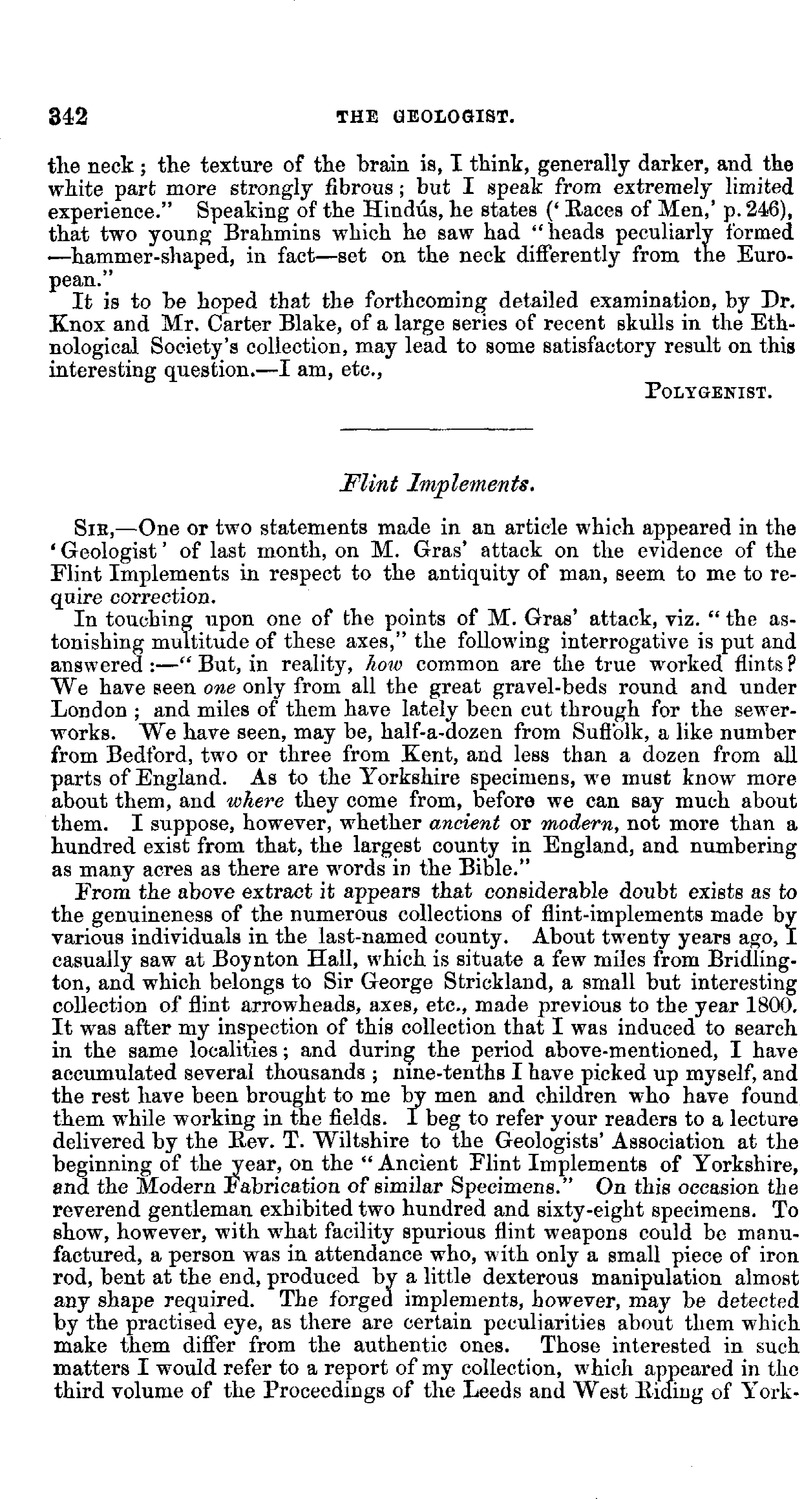No CrossRef data available.
Article contents
Flint Implements
Published online by Cambridge University Press: 17 March 2016
Abstract

- Type
- Correspondence
- Information
- Copyright
- Copyright © Cambridge University Press 1862
References
page 343 note * It was the constant policy of the Romans to draught off the rising population of the conquered provinces, and send them to occupy stations, and, in fact, to form colonies in other countries. We find mentioned in old writers and in inscriptions numerous alœ and cohorts of Britons in various parts of the Roman empire. According to the ‘Notitia,’ the fourth ala of Britons was stationed in Egypt. The twenty-sixth cohort of Britons occurs in Armenia. A body of the “Invincible Younger Britons” were stationed in Spain; and one of the “Elder Britons” in Illyricum. The “Younger British Slingers” (funditores) are found among Palatine auxiliaries. See Wright's, ‘Celt, Roman, and Saxon,’ foot-note, p. 104 Google Scholar. See the above-mentioned ‘Notitia,’ book iv. chap. x. pp. 199, 200, etc.
page 344 note * In Mr. Wiltshire's paper it is stated that he exhibited 268 flint implements found by Mr. Mortimer and his children at Fimber. These were therefore historic and not fossil implements at all.—S. J. M.




